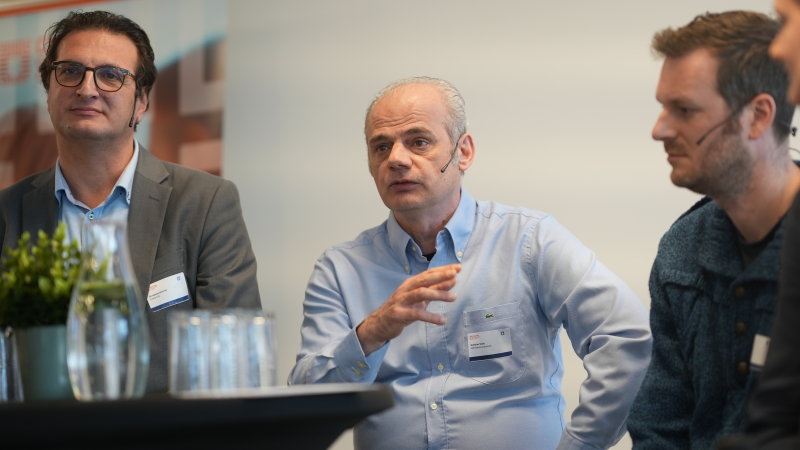Your cart is currently empty!

The AI-driven company: AI-first products
The journey from static ML to AI-first products mirrors the evolution from automation to intelligence, argues Jan Bosch.
In the final stage of the AI-enabled product maturity ladder, we cross a conceptual threshold. Instead of extending traditional products with AI capabilities, we design AI-first products. These are conceived around data and machine learning from the outset. Instead of being bolted on as an afterthought, AI is the core.
AI-first products differ fundamentally from the earlier generations of AI-enabled offerings. Rather than adding intelligence to existing architectures, these products start by defining what the AI must learn, how it will interact with users and how it will continuously improve. Everything else, ranging from software architecture to the user interface, follows from that.
Think of an autonomous vehicle. The car’s perception, planning and control subsystems are entirely driven by AI. Without the machine learning models interpreting the environment and making decisions in real-time, the product doesn’t function. Or consider the generative co-pilots that are increasingly used as daily assistants or companions. Their functionality depends on large language or multimodal models that generate text, images or actions dynamically based on context. These systems aren’t “applications with AI inside”; they’re AI systems wrapped in product form.
In traditional software engineering, the architecture often starts from functionality, such as the features the product should offer. In AI-first products, the starting point is different. The foundation is the data–model loop: how data is captured, labeled, trained on and fed back into models that continuously adapt. This means data pipelines, evaluation and model deployment are the core infrastructure. The logic and user interface layers are subsequently built around the models. The goal is a product that senses, interprets, acts and, crucially, learns.
Feedback loops are the central concept in AI-first systems. Every user interaction, every action by the system and the outcome of the action feed back into improving the underlying model. Ideally, AI-first products exhibit emergent capabilities that were never explicitly programmed.
From a business perspective, the differentiation of products changes. Traditional products compete on features and performance at launch. AI-first products differentiate through their speed of learning. The faster the product improves based on real-world data, the stronger the competitive moat. This moat isn’t static but continues to grow and develop the longer the product learns. As is the case in virtually all digital product contexts, also here the winner takes all. If the leading company doesn’t make some fundamental execution mistakes, once the learning loop is going, it’s impossible to catch up unless you bring a fundamentally new innovation to the market.
Although we’ve long focused on models, the fact is that all companies get access to the same models at about the same time. The real proprietary and valuable asset is data. Owning the learning loop, ie collecting data and using it for model improvements, becomes the core strategic asset.
Similar to companies that have adopted DevOps, companies with AI-first products typically transition from one-time sales to recurring models. The main difference is that, whereas simple usage-based models are fine for companies using DevOps, in this case, we look to monetize improvements in performance with customers. As the model improvements lead to improvements in their business outcomes, we need to capture some of that value to have internal incentives for driving product improvements.
One of the primary challenges that companies deploying AI-first products need to contend with is regulatory compliance, especially concerning data quality, safety and ethics. They need to manage data quality, ensuring fairness and transparency. Also, an autonomously evolving system is much more difficult to ensure from a safety perspective. Finally, complying with AI regulations such as the EU AI Act becomes critical. The question is no longer “Does it work?” but “Does it learn safely, ethically and reliably?”
From an organizational perspective, the focus shifts from planning and development before deployment of the product to experimentation, learning and monitoring the performance of the deployed product. In particular, traditional companies with a history in mechanics struggle with this shift, especially as the learning loop predominantly applies to the ‘bits’ in the product and not the ‘atoms.’ In many industries, however, the bits provide the differentiation and the atoms provide the commodity functionality. Still relevant, as this functionality enables the bits, but not central to the success of products.
Being on the highest stage of this maturity ladder, it’s important to realize that the most transformative AI-first products have yet to be imagined. Typically, when a new technology is introduced, existing products are reinvented using this new technology. Only later, entirely new product categories appear that can’t even exist without AI at their core. For example, autonomous agents that negotiate, design and optimize on behalf of humans or hyper-personalized systems that evolve uniquely for every user. Or collective-intelligence products that learn across ecosystems, not within single product categories or companies. AI isn’t just transforming how we build products; it’s transforming what a product is.
The journey from static ML to AI-first products mirrors the evolution from automation to intelligence. Once we stop thinking about AI as a feature and start treating it as the foundation and core of products, the nature of innovation changes. We move from programming logic to training and learning behavior, from shipping versions to orchestrating evolution, from planning pre-deployment to learning post-deployment. I think that every company needs to start from AI being the essence of the product and then develop the rest of the functionality around it. To end with a quote by Ginni Rometty, former CEO of IBM, “Some people call this artificial intelligence, but the reality is this technology will enhance us. So instead of artificial intelligence, I think we’ll augment our intelligence.”


